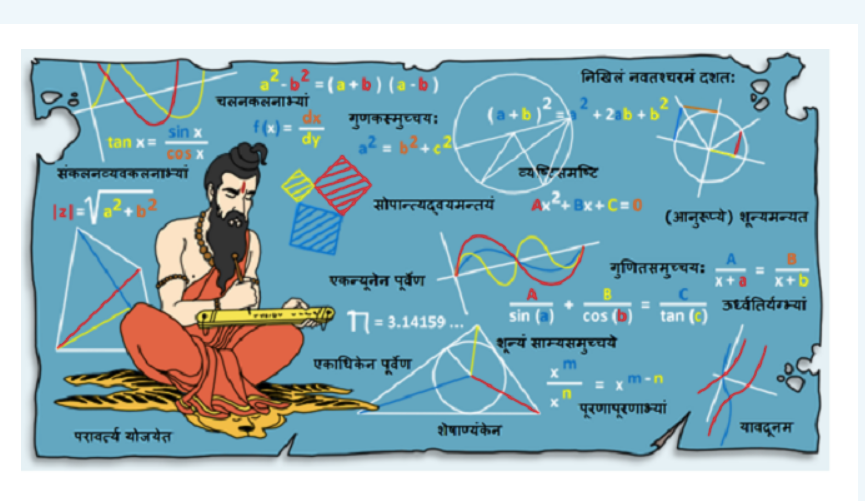The system is based on a set of 16 sutras (aphorisms) and 13 sub-sutras (corollaries) that describe various methods for performing mathematical operations. These sutras and sub-sutras are believed to be complete and self-sufficient, covering all branches of mathematics from arithmetic to algebra and geometry.
One of the key features of Vedic mathematics is its focus on mental calculation. The system uses a series of simple and efficient techniques for solving mathematical problems, many of which can be performed mentally. Some of the key techniques used in Vedic mathematics include one-line multiplication, digit sum, and the duplex method.
One-line multiplication is a technique for breaking down a multiplication problem into a series of simpler steps that can be performed mentally. For example, to multiply 14 by 13, you would multiply the tens digits (1 and 1) to get 1, and then add this to the product of the units digits (4 and 3) to get 182. This method can be used to solve multiplication problems of any size, and is particularly useful for large numbers.
Digit sum is another technique used in Vedic mathematics, which involves finding the sum of the digits in a number, and using this to perform calculations. For example, to multiply 29 by 27, you would find the digit sum of each number (2+9=11 and 2+7=9), and then multiply these sums (11x9=99). You would then add this to the product of the difference between the original numbers and the digit sum (2x7=14, 29-11=18, and 27-9=18) to get 783. This technique can be used for addition, subtraction, multiplication, and division, and is particularly useful for mental calculation.
The duplex method is a technique used for squaring a number, which involves breaking it down into smaller parts and performing simple calculations. For example, to square 25, you would break it down into 20 and 5, and then perform the calculation (20x20=400, 2x20x5=200, 5x5=25). You would then add these results together to get 625. This method can be used for any number, and can be extended to other operations such as cube roots and higher powers.
Vedic mathematics has been praised for its simplicity, efficiency, and effectiveness in solving complex mathematical problems. It has been used in various fields, including engineering, finance, and computer science. In addition, the system has been used in education, and has been found to be effective in improving students' mathematical abilities and reducing math anxiety.
However, some critics have argued that the system is based on outdated techniques and lacks the rigor of modern mathematical methods. In addition, some of the sutras and sub-sutras have been criticized for being too general and not providing enough detail. Nevertheless, Vedic mathematics remains a fascinating and important part of India's cultural heritage, and continues to be studied and practiced by scholars and enthusiasts around the world.
In conclusion, Vedic mathematics is a system of mathematics that originated in ancient India, and is based on the Vedas, which are ancient Hindu texts. The system uses a series of simple and efficient techniques for performing mathematical operations, and has been praised for its effectiveness in solving complex mathematical problems. While the system has its critics, it remains an important part of India's cultural heritage, and continues
For know about hierarchy of number click here
For know about history of number click here


No comments:
Post a Comment